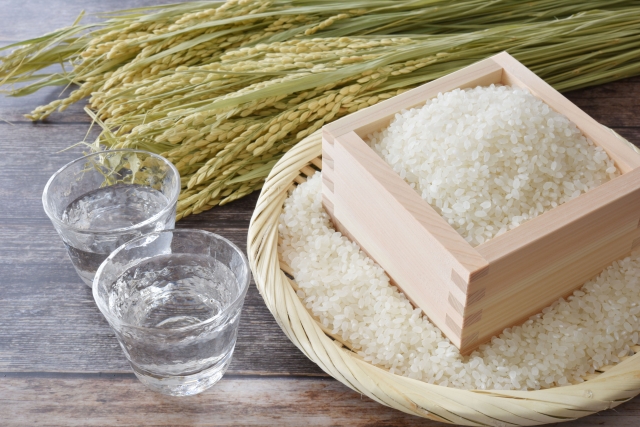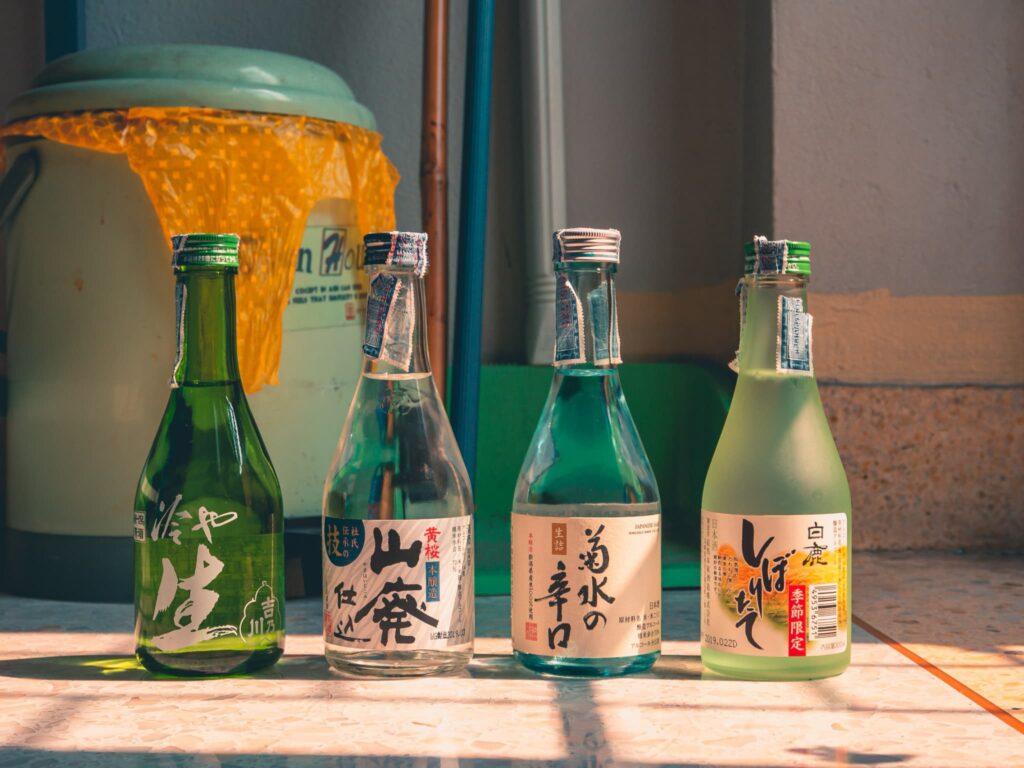In Japan, there is a diverse culture of alcoholic beverages.For both domestic and international travelers, savoring local drinks is a source of joy and serves as cherished souvenirs. Japanese sake, shochu, awamori, and more have earned global acclaim, and their production methods and drinking customs carry unique traditions. In this column, we will explore the traditional Japanese beverage, ‘sake.’

The Allure and Production Method of Sake
Sake, one of Japan’s representative and traditional alcoholic beverages, is beloved for its delicate flavor and rich aroma. Sake is primarily made from three main ingredients: rice, water, and koji (rice malt). By polishing the rice and fermenting it together with koji, it develops its distinctive taste and aroma. Sake comes in various types, such as ginjo-shu and daiginjo-shu, each with a different name based on the degree of rice polishing, and they all have unique characteristics.
The Characteristics of Sake Names
| Junmai Daiginjo
With a polishing rate of 50% or less |
Junmai
Ginjo with a polishing rate of 60% or less |
Special production method or polishing rate of 60% or less | – | |
| No Brewing Alcohol (Junmai) | Junmai Daiginjo Sake | Junmai Ginjo Sake | Tokubetsu Junmai Sake | Junmai Sake |
| Brewing Alcohol Included (alcohol added during brewing) | Daiginjo Sake | Ginjo Sake | Tokubetsu Honjozo Sake | Honjozo Sake (Polishing rate below 70%) |
The Charms of Pairing with Cuisine
Japanese sake is widely known for its delicate flavors and versatility in pairing with Japanese cuisine. However, in recent years, Japanese sake has gained recognition for its excellent compatibility with a diverse range of global dishes. Below, we’d like to explore the allure of Japanese sake as it ventures into new culinary pairings, beyond traditional Japanese cuisine.”
Pairing with Traditional Japanese Cuisine
Sushi and Sashimi The pairing of sushi and Japanese sake is well-known as a traditional combination. Crisply textured, fatty sushi like toro pairs beautifully with a refined, sharp dry sake. The combination of fresh sashimi and Japanese sake is also exquisite. Delicate seafood complements a refreshing sake with a subtle umami, enhancing the flavor of the sashimi.Oden and Simmered Dishes Light, dry sake with a warm touch complements simmered dishes like oden perfectly. Combined with the essence of the broth, it offers a pleasant Japanese flavor profile to savor. Pairing with New Cuisines
Western Cuisine
Surprisingly, Japanese sake pairs well with Western cuisine. For example, when paired with pasta or pizza, it creates an exquisite balance that brings out new flavors and enhances the delicate flavors and characteristics of the ingredients.
Indian Cuisine
Pairing spicy and flavorful Indian cuisine with Japanese sake leads to unexpected and delightful combinations. Sake can help mellow the spiciness and elevate the overall flavor profile, adding a unique dimension to the experience.
Cheese
The combination of cheese and Japanese sake might come as a surprise to many. However, the rich flavor of cheese and the crisp taste of sake complement each other, creating a wonderful harmony on the palate. They enhance each other’s characteristics, resulting in a fantastic pairing.The pairing of sake with food showcases not only its combination with traditional Japanese cuisine but also its wonderful compatibility with a diverse range of global dishes. By blending traditional wisdom with new culinary adventures, the allure of sake expands even further. We encourage you to try the delightful experience of pairing sake with your meals.”
Sake Breweries in Kansai
The Kansai region is renowned as a sake-producing area, boasting many excellent sake breweries. Below, we introduce some representative sake produced in Kansai.

Hyogo Prefecture – Sake from the Nada Gogo Region
Hyogo Prefecture is renowned as a sake-producing region, particularly the coastal areas along the Seto Inland Sea from Kobe City to Nishinomiya City, known as Nada Gogo. These five regions – Nishigo, Mikagego, Uozakigo, Nishinomiyago, and Imazugo – are well-known. Abundant in high-quality water and rice, they produce exceptional sake. Representative brands include “Hakushika,” “Sho Chiku Bai,” and “Shirayuki.”
Kyoto Prefecture – Sake of Kyoto
Kyoto Prefecture is a region steeped in tradition and history, and its sake is also adorned with that heritage. Kyoto sake is characterized by its delicate and refined flavor, making it a perfect match for Japanese cuisine. Representative brands include “Gekkeikan,” “Tamanohikari,” and “Kamotsuru.”
Nara Prefecture – Sake of Nara
Nara Prefecture is gaining attention as a sake-producing region. Sake from Nara reflects the natural surroundings and historical background of the area, resulting in a distinctive flavor. Representative brands include “Harushika” and “Kazenomori.”
Shiga Prefecture – Sake Harnessing the Blessings of Lake Biwa
Shiga Prefecture is home to Lake Biwa, and it is a region known for producing sake nurtured by high-quality water and rice. Sake utilizing the blessings of Lake Biwa is characterized by its gentle and refreshing taste. Representative brands include “Kira Naga” and “Haru no Mine.These are just some of the representative Japanese sake from the Kansai region, but there are even more excellent ones to explore. Sake from the Kansai region carries its own unique characteristics influenced by factors such as local climate, water quality, and rice varieties. When you have the chance to visit the Kansai region, we encourage you to enjoy the local sake and discover their distinct flavors.
Summary
How was it? We hope you’ve become interested in the charm and depth of sake. In recent years, the production of local sake, known as “jizake,” has been thriving, and it’s being crafted all over the place. Please enjoy sake during your travels.


